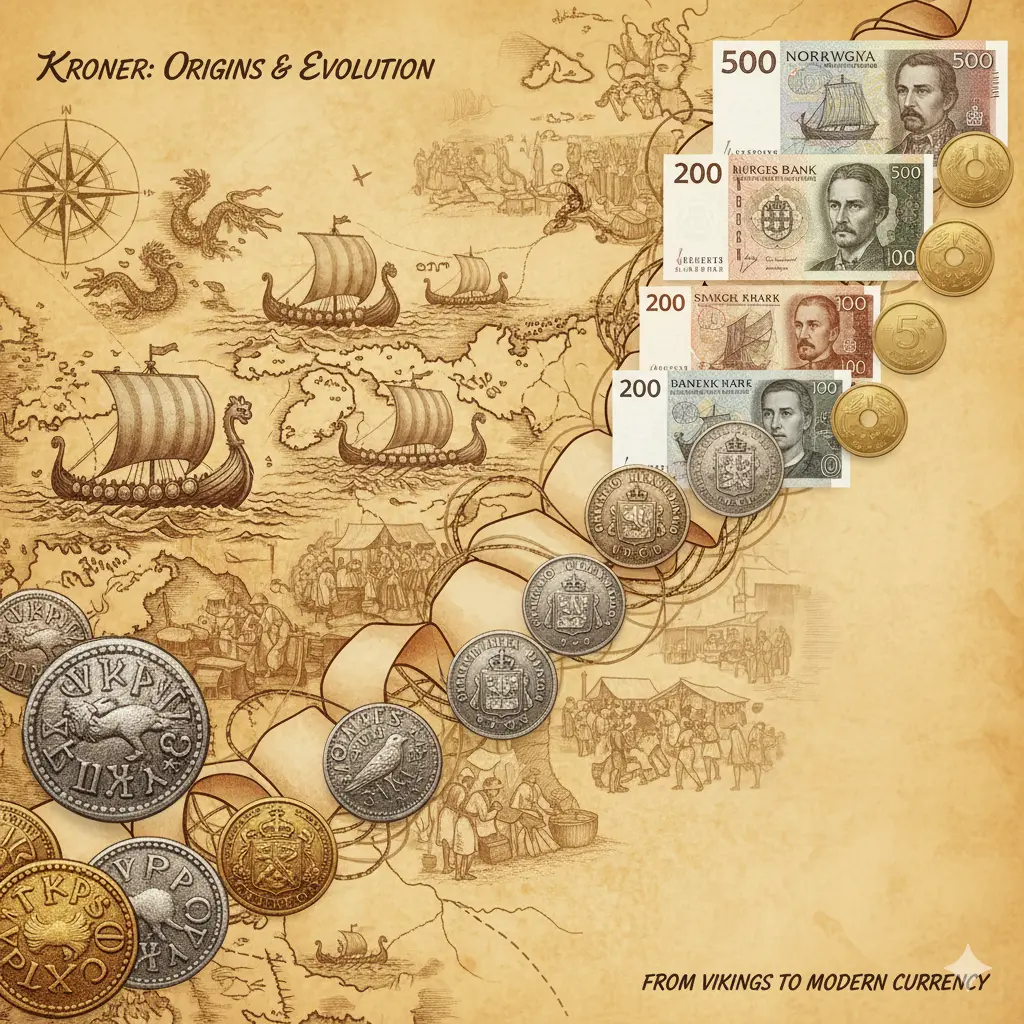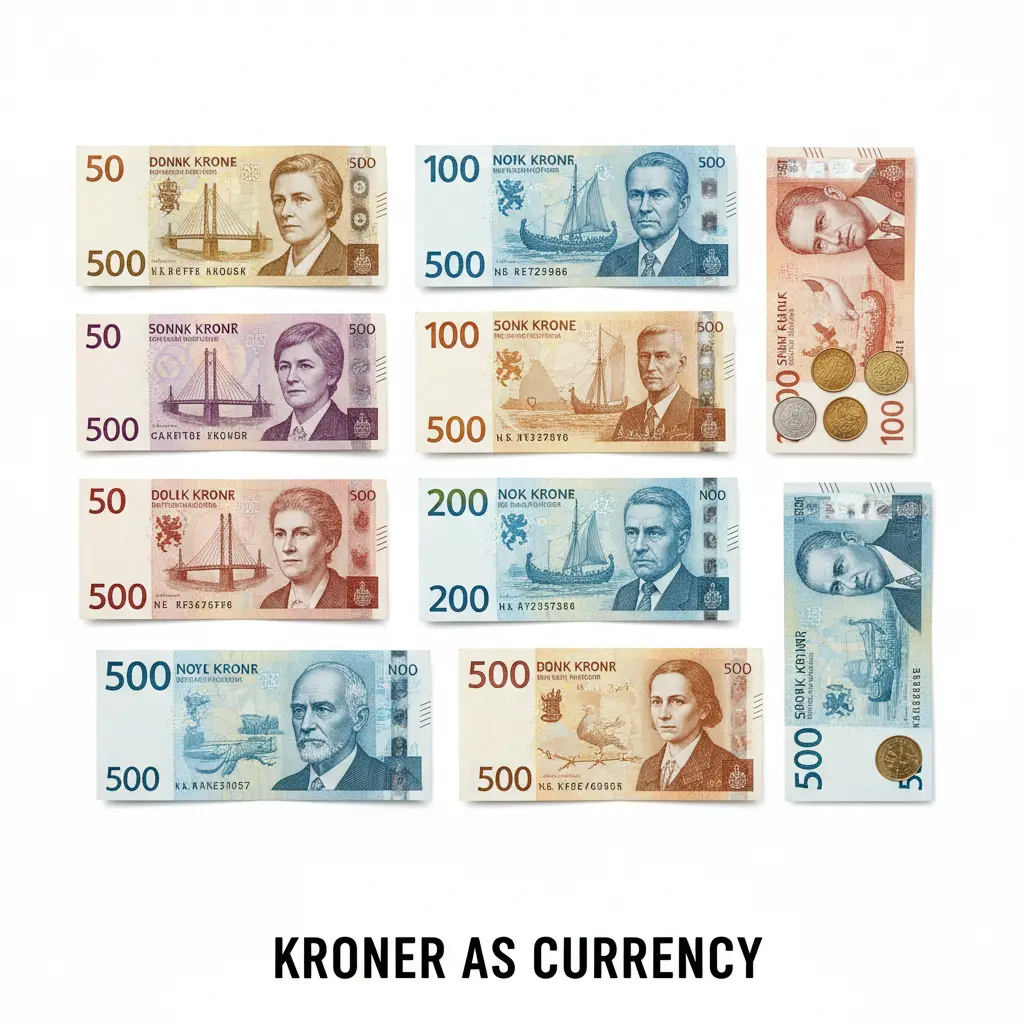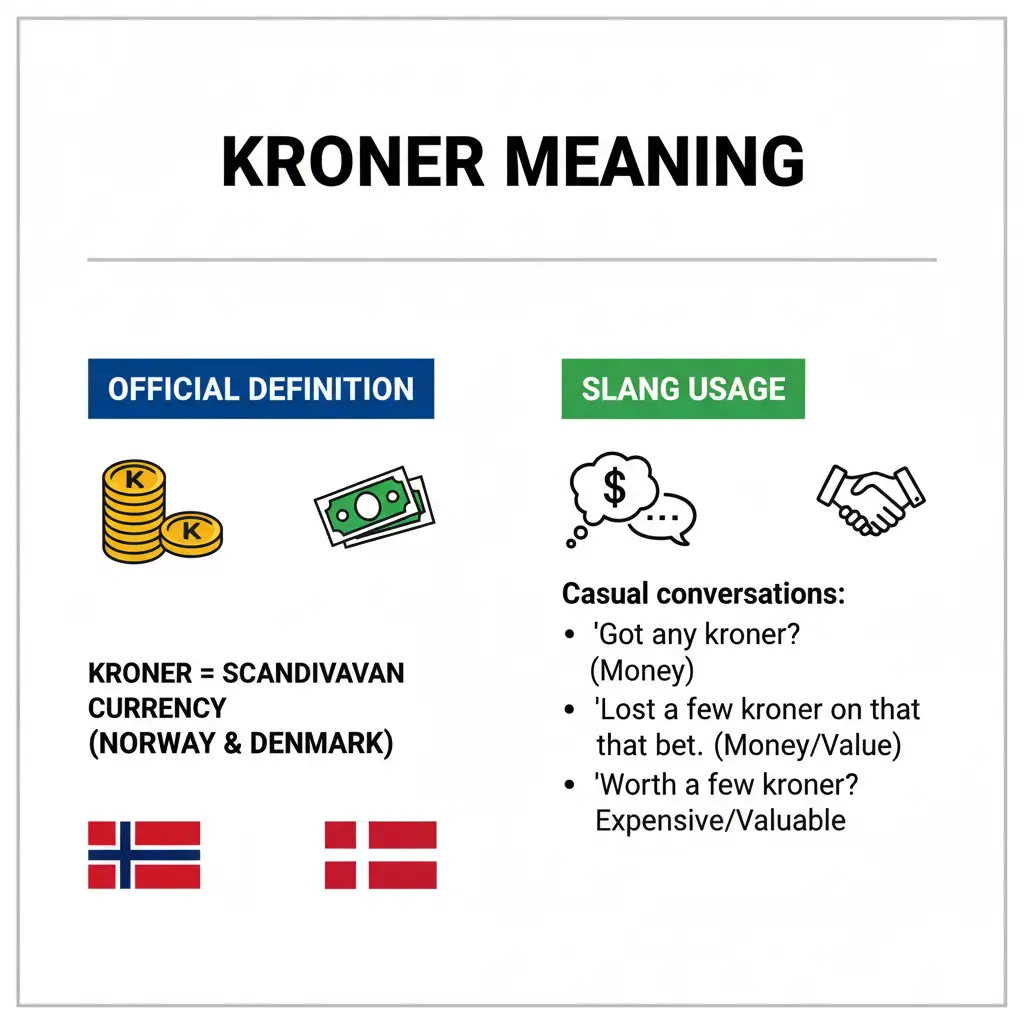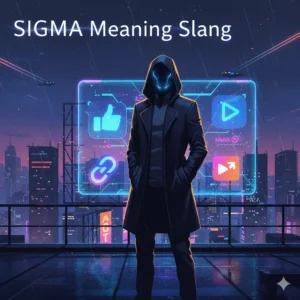The word “Kroner” may be familiar to travelers, finance enthusiasts, and social media users, but many people are unsure of its exact meaning.
Simply put, kroner is the official currency in Norway and Denmark, and its plural in Sweden is “kronor.”
Beyond currency, kroner has also gained popularity as a slang term in informal conversations online, especially among Scandinavian youth.
Understanding Kroner meaning will help you in everyday conversations, international travel, finance, and even social media contexts.
In this guide, we’ll explore the history, value, usage, slang interpretations, real-life examples, and cultural relevance of kroner to provide a comprehensive understanding of this Scandinavian currency.
Table of Contents

- The Origin of Kroner
- Kroner as Currency
- Norwegian Krone (NOK)
- Danish Krone (DKK)
- Swedish Krona (SEK)
- Kroner vs Other Global Currencies
- Historical Evolution of Kroner
- Real-Life Examples of Using Kroner
- Kroner in Slang and Pop Culture
- Collecting Kroner Coins and Notes
- How to Exchange Kroner
- Common Misconceptions About Kroner
- Kroner in Finance and Economy
- Conclusion
1. The Origin of Kroner

The term “Kroner” comes from the Scandinavian word for “crown.” Introduced in the late 19th century, kroner replaced older currencies in Norway, Denmark, and later Sweden, symbolizing the monarchy.
- Norway: The Norwegian krone was introduced in 1875 as part of the Scandinavian Monetary Union.
- Denmark: Denmark followed a similar model with the Danish krone, maintaining ties with gold-backed currency initially.
- Sweden: The Swedish “krona” is singular, while “kronor” is plural, similar to kroner.
Understanding the origin provides context for how the currency is deeply tied to Scandinavian heritage and governance.
2. Kroner as Currency

Norwegian Krone (NOK)
The Norwegian krone is the official currency of Norway. Its symbol is kr, and one krone is subdivided into 100 øre.
- Example: 50 NOK = 50 kroner
- Value: 1 NOK ≈ $0.09 USD (2025 estimate)
- Usage: Daily shopping, banknotes, coins, and financial transactions
Norwegian kroner are also considered stable due to Norway’s strong economy and oil revenues.
Danish Krone (DKK)
The Danish krone functions similarly, also abbreviated kr, and subdivided into 100 øre.
- Example: 100 DKK = 100 kroner
- Value: 1 DKK ≈ $0.14 USD
- Usage: Common in banking, ATMs, retail, and currency exchange.
Swedish Krona (SEK)
While Sweden uses krona in singular, the plural is kronor, serving the same purpose as kroner in other Scandinavian countries.
- Example: 200 SEK = 200 kronor
- Value: 1 SEK ≈ $0.09 USD
Quick Currency Comparison Table
| Currency | Symbol | Value (2025) |
|---|---|---|
| Norwegian krone | NOK | $0.09 USD |
| Danish krone | DKK | $0.14 USD |
| Swedish krona | SEK | $0.09 USD |
This table helps compare kroner vs dollar and plan budgets when traveling in Scandinavia.
3. Kroner vs Other Global Currencies
Understanding Kroner vs other currencies is crucial for travelers, investors, and online shoppers.
- 1 USD ≈ 10 NOK
- 1 EUR ≈ 7.5 DKK
- Kroner vs GBP: 1 GBP ≈ 12 NOK
Tracking Kroner exchange rate regularly ensures accurate conversions and financial planning.
4. Historical Evolution of Kroner
Kroner has a rich history:
- 1875: Norway and Denmark adopt kroner in the Scandinavian Monetary Union.
- 1914: World War I dissolves the union, but the currencies continue separately.
- 1973–Present: Norway and Denmark maintain their kroner, with Sweden using kronor.
Historical coins and notes reflect monarchs, cultural events, and economic shifts.
5. Real-Life Examples of Using Kroner
Travel and Shopping
- Buying souvenirs in Oslo: A handcrafted item may cost 150 Norwegian kroner.
- Dining in Copenhagen: A meal may cost 200 Danish kroner.
Online and Slang Usage
- Casual: “I need a few kroner to grab lunch.”
- Gaming: Players may refer to virtual currency as kroner in Scandinavian games.
6. Kroner in Slang and Pop Culture
In informal contexts, kroner slang meaning refers to money in general. This is common in:
- Social media captions: “Earned some kroner today 💰”
- Gaming communities: Referring to virtual coins as kroner
- Memes and trends: Scandinavian users often use “kroner” humorously in online conversations
Pop culture references help the term reach global recognition beyond finance.
7. Collecting Kroner Coins and Notes
Numismatics enthusiasts often collect kroner coins and notes:
- Special editions commemorate monarchs, events, or anniversaries.
- Rare coins from the 19th century can fetch high prices.
- Collectors should track Norwegian krone value and Danish krone value to evaluate collections.
8. How to Exchange Kroner
Methods:
- Banks and ATMs – Reliable for up-to-date rates.
- Currency exchanges – Often slightly higher fees.
- Online converters – Use tools like Google, XE, or OANDA.
Example Conversion:
- 500 NOK ≈ 45 USD
- 1,000 DKK ≈ 140 USD
Always check the latest Kroner exchange rate before trading currency.
9. Common Misconceptions About Kroner
- Kroner is only used in Norway – Incorrect; Denmark and Sweden also use it.
- Kroner refers to jewelry or crowns – In context, it is money.
- Kroner is rare – While less common than USD, it is widely circulated in Scandinavia.
10. Kroner in Finance and Economy
- Norwegian oil revenue and GDP often measured in Norwegian kroner.
- Danish exports and stock markets calculated in Danish kroner.
- Sweden’s economy relies on Swedish kronor in trade and investment.
Understanding Scandinavian money terminology is essential for investors, travelers, and international business.
11. Conclusion
The meaning of kroner goes beyond simple currency. It reflects Scandinavian history, culture, and modern financial systems. Whether in formal usage like Norwegian kroner or Danish kroner, or informal Kroner slang meaning, this term is versatile and widely recognized.
By learning its context, value, and applications, you can confidently navigate Scandinavian money, compare kroner vs dollar, and even understand pop culture references.



